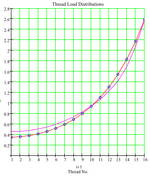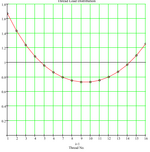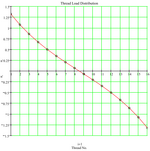Hi all
Having a debate with a few friends (some engineers and some non-engineers, but mechanically inclined). For an NPT threaded pipe connection under a tensile load, is the load applied to:
> ONLY the last engaged external thread;
> Distributed evenly across all engaged threads, or;
> Highest at the last engaged thread and then decrease with increasing distance from the end of the connection?
We look forward to the conversation!
Having a debate with a few friends (some engineers and some non-engineers, but mechanically inclined). For an NPT threaded pipe connection under a tensile load, is the load applied to:
> ONLY the last engaged external thread;
> Distributed evenly across all engaged threads, or;
> Highest at the last engaged thread and then decrease with increasing distance from the end of the connection?
We look forward to the conversation!



